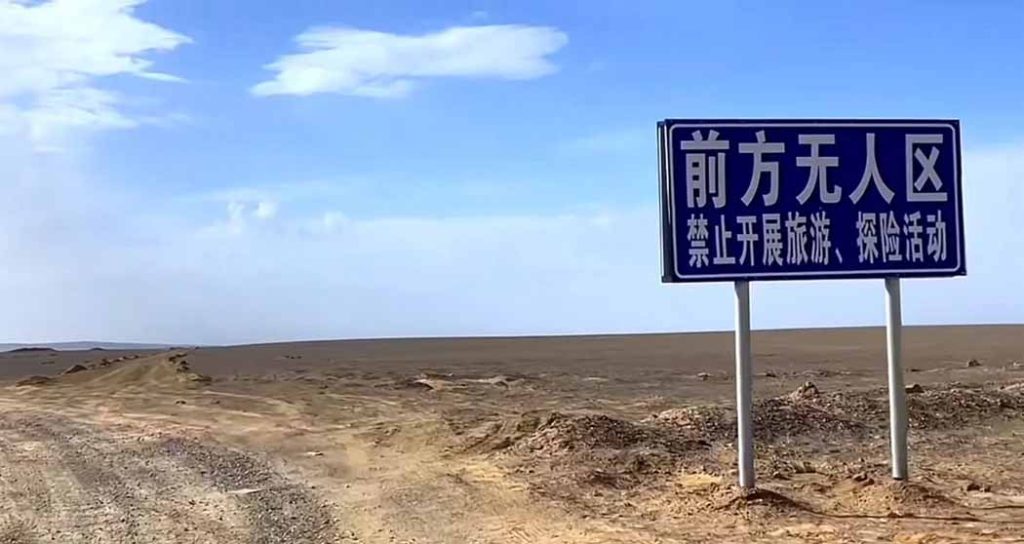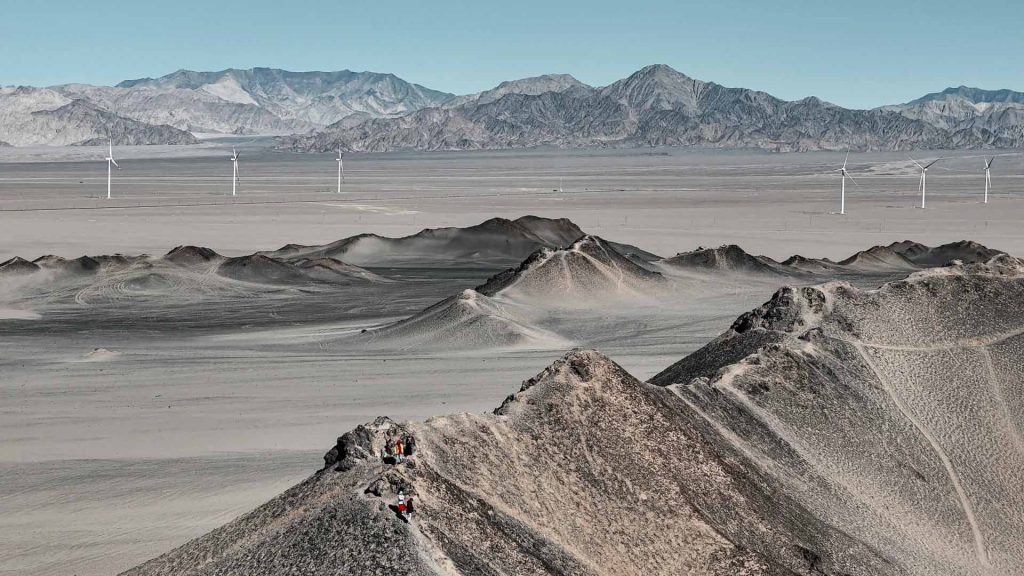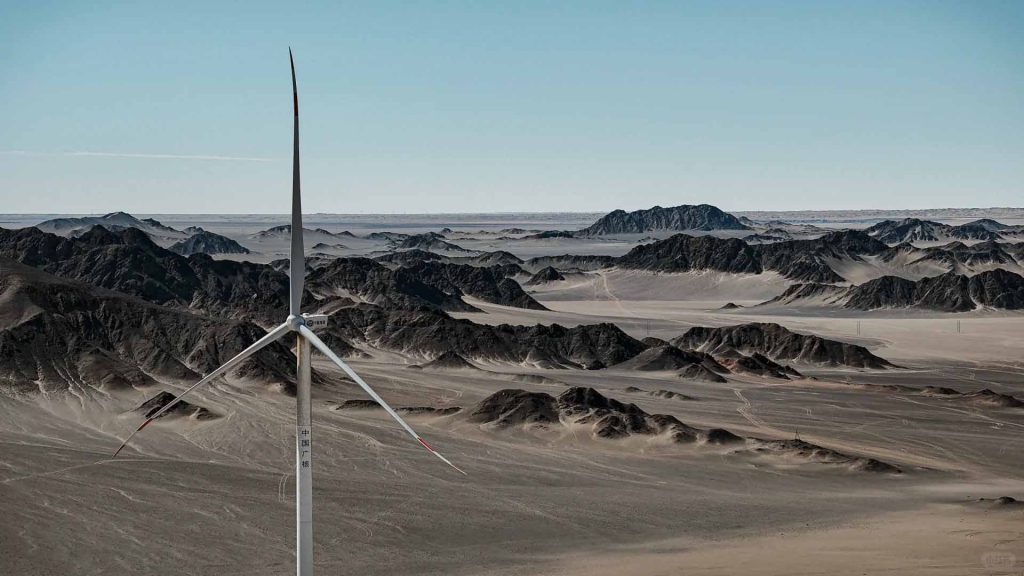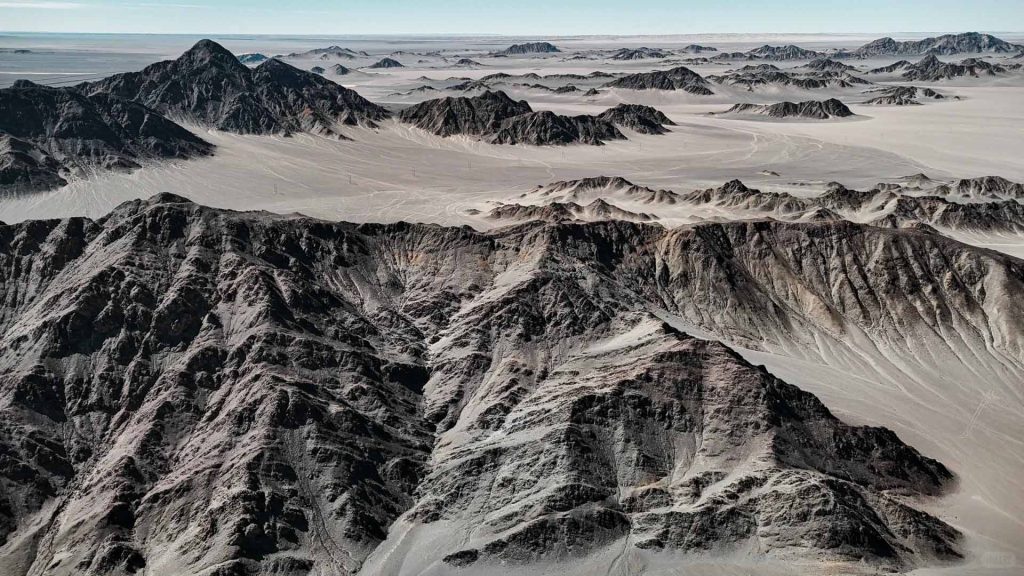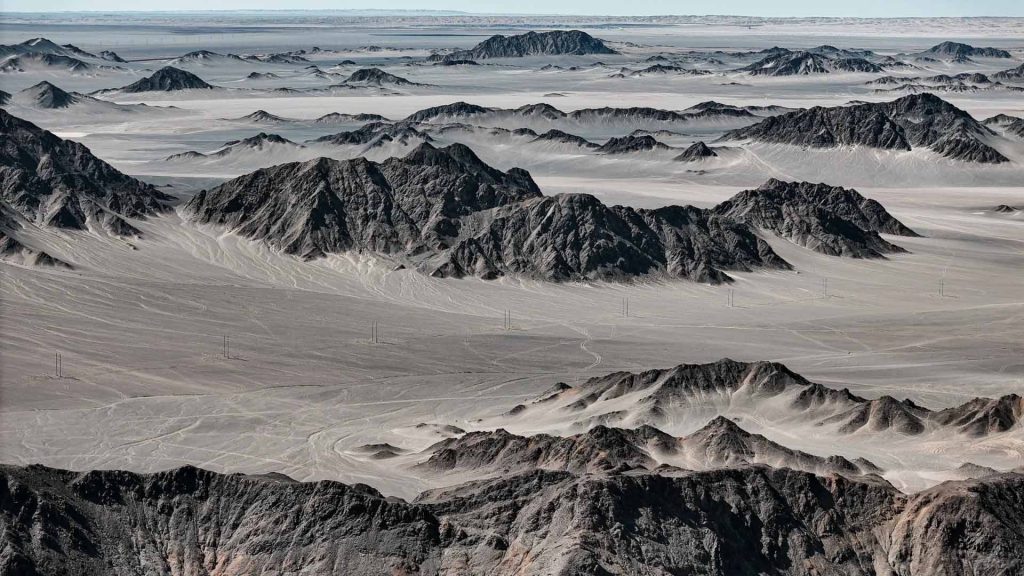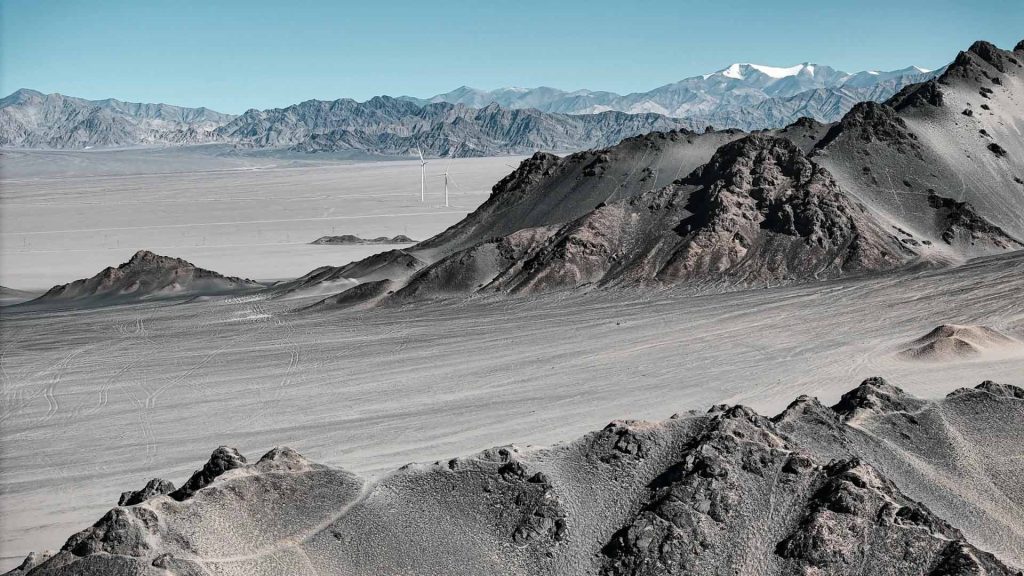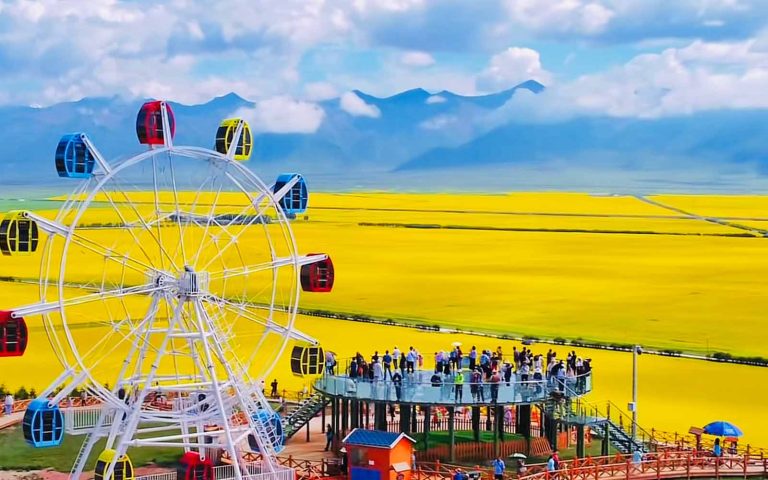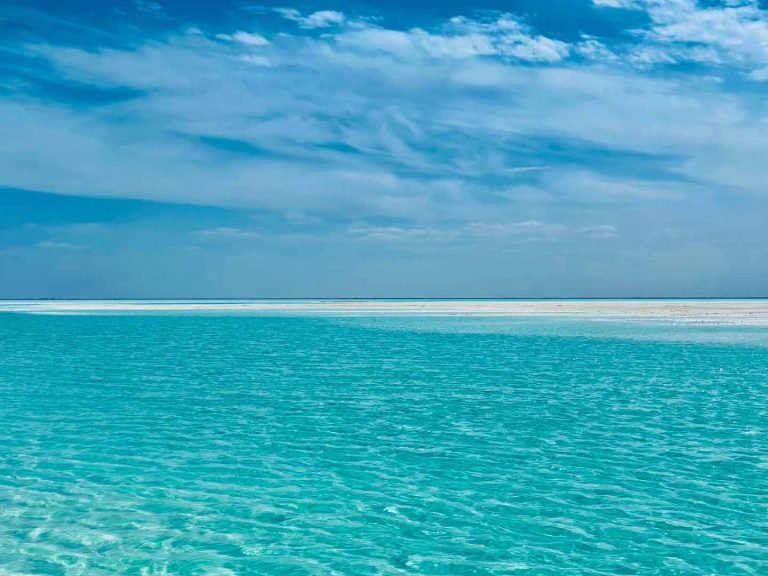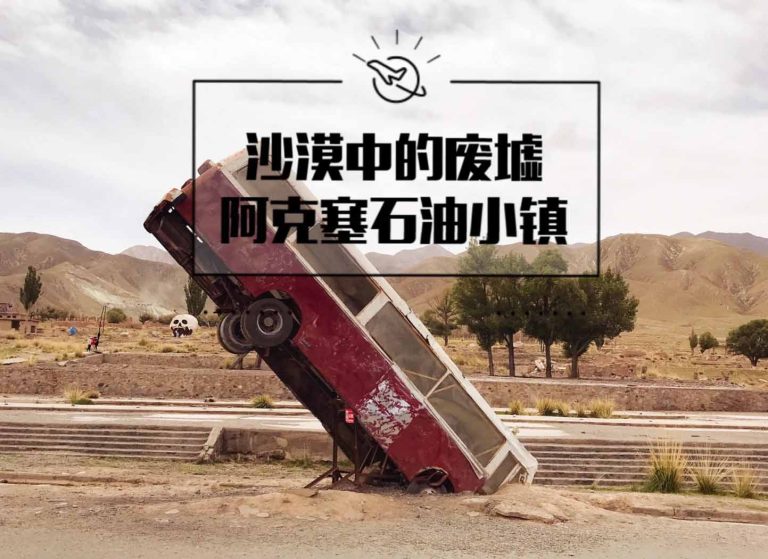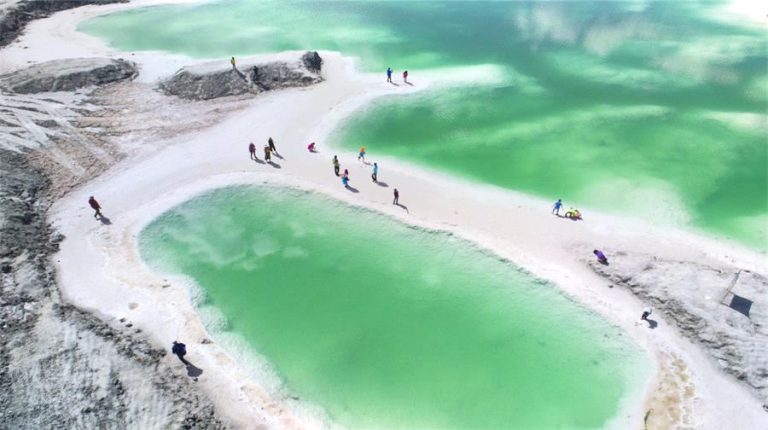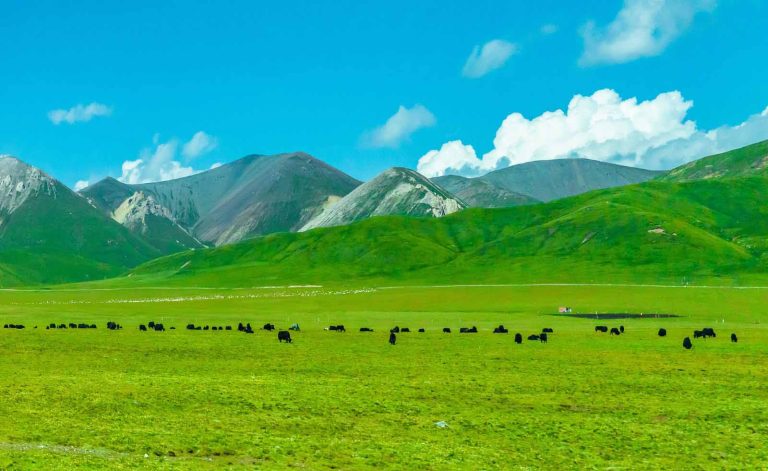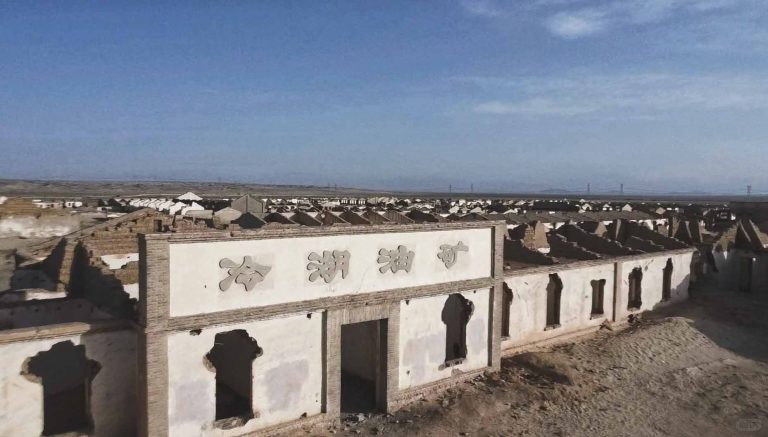address
Mengya City, Haixi Mongolian and Tibetan Autonomous Prefecture
Opening hours
The park is open; open from 08:20-20:00
In the desert and Gobi landscape of Lenghu Town, Mangya City, Qinghai Province, stands a peculiar landform known as “the place on Earth most like the moon”—Heidu Mountain. Here, lush vegetation and babbling streams are absent, replaced by a monochrome world of jet-black mountains and white sandy salt flats—a landscape resembling a dry-brush ink painting unfurled across the earth. This natural wonder, sculpted by millions of years of geological forces, has recently gained popularity as a niche destination along the Northwest Loop. Its unique desolate beauty and serene atmosphere draw photography enthusiasts and wilderness explorers to make pilgrimages here.
1. Core overview: A geological epic carved over hundreds of millions of years
The formation of Heiduoshan began during the Ordovician period, approximately 430 to 490 million years ago. composed of clastic and volcanic rocks from an inter-basin mountain range. These rocks, originally buried deep underground, were exposed through crustal uplift. Under intense wind erosion in the Qaidam Basin, iron and manganese elements on the rock surfaces gradually formed a thin layer of black “desert varnish,” ultimately creating the mountain’s current deep, ink-black appearance. Earlier volcanic activity erupted basaltic magma that cooled and, through prolonged weathering and erosion, formed loose black gravel. This intertwines with the white saline deposits and yellow gravel scattered throughout the mountains, creating a strikingly layered color contrast—as if nature itself had painted a vast ink-wash scroll.
This region spans tens of square kilometers, featuring undulating mountain ranges that remain disconnected. The highest peaks reach approximately 3,200 meters above sea level. While the slopes are relatively gentle, the surfaces are covered in loose gravel, requiring extreme caution when traversing. Situated on the edge of an uninhabited zone, the ecosystem is extremely fragile. Every inch of the landscape has evolved over millions of years, and once damaged, it is difficult to restore naturally. Therefore, it falls under strict ecological protection. The essence of this place lies in its profound solitude—devoid of man-made structures and bustling crowds. Only the whistling wind echoing through the rocks and the shifting play of light and shadow across the stone surfaces remain, forming a silent ode to nature’s majestic power.
2. Geographical location: the coordinates of the edge of no man’s land
Heidushan is located about 20 kilometers southwest of Lenghu Town, Mengya City, Haixi City, Qinghai Province. It is located on the northwest edge of the Qaidam Basin. Its geographical coordinates are roughly between 93°10′-93°15′ east longitude and 38°40′-38°45′ north latitude. It is close to the G315 National Highway (‘U-shaped Highway’ section), which connects Mengya.An important node between the city and the Cold Lake petroleum site.
Judging from the regional location, it is about 150 kilometers away from the urban area of Manya to the west, about 20 kilometers away from Lenghu Town to the east, the branch of the Alshan Mountain Range to the south, and the Oboliang Yadan Topographic group to the north. It is located on the core section of the “Manya-Lenghu-Dunhuang” northwest tourist loop. There are a number of world-class natural and cultural landscapes scattered around: it is about 25 kilometers away from the Cold Lake Petroleum Industry site, about 80 kilometers away from the Oboliang Mars Camp, and about 300 kilometers away from the Mogao Grottoes in Dunhuang. It is a very characteristic “niche replenishment” attraction on the Ganqing Great Loop.
3. Transportation guide: Walk through the wilderness dominated by self-driving
Heidushān is located in a remote desert area with no public transportation coverage. Driving your own vehicle or chartering a car is the only feasible way to reach this destination. Thorough route planning and vehicle preparation are essential for the journey.
(1) External arrival method
- Airplane + car rental / charter:
- You can fly to Manya Huatugou Airport (IATA Code: HUO), which is the nearest airport to Heidushan, about 150 kilometers away from the scenic area. Routes to Xining, Lanzhou, Dunhuang and other cities have been opened, and the flight from Xining takes about 2 hours.
- Airport transportation: There are regular car rental spots at the exit of the airport (5-seater SUVs are about 400-600 yuan /day, advance reservation is required), drive east along the G315 National Highway, pass through Manya City and Lenghu Town, and then follow the signs to the south for about 20 kilometers to arrive; you can also charter a car at the airport (including driver)., About 800-1000 yuan /day), the driver is familiar with the road conditions and can take into account the attractions along the way.
- Self-driving travel (recommended method):
- Recommended route:
- Dunhuang direction: Starting from Dunhuang City, follow the G3011 Liuge Expressway to the west, turn to the G315 National Highway to the south, and after passing through Lenghu Town, drive along the “Black Dushan” sign next to the road for about 20 kilometers. The whole journey is about 300 kilometers, which takes 5-6 hours. Along the way, you can stop at Akse Petroleum Town, Lenghu Ruins, etc.attractions.
- Xining direction: Starting from Xining, follow the G6 Beijing-Tibet Expressway to the west, turn to the Dexiao Expressway and the G315 National Highway, and arrive after passing through Dachaidan and Lenghu Towns. The whole journey is about 900 kilometers and takes 12-14 hours. It is recommended to travel in two days. You can stay and rest in Dachaidan halfway.
- Vehicle requirements: You must choose a four-wheel drive SUV or off-road vehicle, because the last 20 kilometers of the road are unpaved Gobi roads, some areas have gravel and potholes, and two-wheel drive vehicles are easy to get stuck; tires, spare tires and oil volume need to be checked in advance. There are few gas stations along the way, and Lenghu Town is the last large refueling place.point.
- Navigation tips: Ordinary navigation can search for “Cold Lake Black Dushan’, but the signal is weak after entering the Gobi section. It is recommended to download the offline map in advance and follow the ruts along the way to avoid deviating from the main route.
- Chartered Vehicle / Shared Ride::
- You can find local travel charter services in Lenghu Town, Manya Urban area or Dachaidan Town. The round trip from Lenghu Town to Heidushan is about 50 kilometers. The cost of the charter is about 300-400 yuan/car (can seat 4 people), and the carpool is 80-100 yuan per person. Some chartered drivers will provide a simple explanation service.
(2) Internal tour transportation
Heidu Mountain has not yet built an official tourist trail. The whole journey needs to be explored on foot. The core tourist area has a walking range of about 3-5 kilometers. It is recommended to walk along the rut marks or white marked routes on the edge of the mountain to avoid stepping on undeveloped areas. Due to the gentle terrain and no obvious climbing section, ordinary tourists can adapt to it, but they need to pay attention to the slippery gravel under their feet and the walking speed should not be too fast.
4. Tickets and open information: free and open, strictly controlled
(1) Ticket policy
Heidushan currently implements a free opening policy.There is no need to purchase tickets or make reservations, but it is necessary to strictly abide by the scenic area control regulations and conduct activities in designated areas. There is no ticket window set up in the scenic area, and there are no charges. You only need to bear the transportation and self-supply costs (about 50-60 transportation costs).
(2) Opening hours and best time
- Opening hours: It is open all day, but it is not recommended to stay at night. Due to the sudden drop in temperature in the Gobi at night, and there is no lighting or communication guarantee, there is a safety risk.
- Best time to visit:
- 9:00-11:00 am: The sun shines obliquely, the shadows of the mountains are clearly layered, and the contrast between black and white is strong. It is suitable for shooting ink-style blockbusters.;
- 16:00-18:00 pm: The light is soft, which can capture the delicate texture of the mountain surface. The backlight effect 1 hour before sunset is particularly shocking, which can show the unique texture of “Heijinshan Mountain”.
- Seasonal recommendations: Spring and autumn (April-May, September-October) are the best, the temperature is between 5-20℃, and there is less sand and wind; in summer, the temperature at noon can reach above 35℃, and it is necessary to be prepared for heatstroke; in winter, the temperature is as low as -20℃, and it is prone to snowstorms. It is not recommended for non-professional adventurers to go.
5. Must-visit attractions and featured experiences
(1) Core landscape area
- Main mountain observation deck:
- This is the most representative landscape area of Heidu Mountain. The black mountains unfold like a barrier, and the ridge lines are sharp as knives. The white saline-alkaline land at the foot of the mountain forms a natural “rice paper” with yellow gravel. Looking down from a height, it looks like a three-dimensional ink painting scroll. Along the gentle slope of the mountain, you can climb to the mid-mountain observation deck. Here, you can have a wide view and have a panoramic view of the three colors of “black mountain, white sand, and blue sky”. It is a must-take spot for photography enthusiasts.
- Gravel beach Geological Area:
- The gravel beaches around the mountain are scattered with a large number of black basalt fragments, some of which have a natural melt flow texture and have a metallic luster under sunlight. They are called “obsidian beaches” by the locals. This is a paradise for geology enthusiasts. You can observe the traces of the formation of “desert paint” up close, but it is strictly forbidden to take away any rock specimens, and violators will face penalties.
- Gobi Vision shooting Point:
- Walking about 1 kilometer from the main mountain to the northwest, you can reach an open Gobi Desert. Here, you can take pictures of the superimposed landscape of Heidu Mountain and the distant Yadan landform. The sense of vastness connected to heaven and earth is very visually impactful, especially suitable for the use of wide-angle lenses to create.
(2) Featured experience projects
- Wilderness photography creation:
- Black Dushan is a natural photography studio, whether it is a black and white documentary, a large landscape or a portrait creation, it can produce films. It is recommended to bring a wide-angle lens (for shooting panoramic views), a telephoto lens (for capturing mountain details), and prepare a gradient gray filter to balance the exposure of the sky and the ground; it is recommended to wear bright-colored clothing such as red and white, which form a strong contrast with the black and white landscape.
- Geological research and observation:
- You can observe the weathering traces of volcanic rocks, the formation process of “desert paint” and the ecology of saline-alkaline land in designated areas. Carrying a geological magnifying glass can more clearly see the mineral crystals on the rock surface and feel the traces of geological evolution over hundreds of millions of years, but you need to pay attention to the fragile ecology under your feet and do not dig at will.
- Starry sky observation experience:
- If you stay in Lenghu Town, you can return to the edge of Heidu Mountain on a clear night (multiple people are required to travel and drive). The light pollution here is almost zero, and the Milky Way is clearly visible. Shocking pictures of the Milky Way across the Black Mountains can be captured. It is recommended to bring a tripod, shutter cable, and use a high-sensitivity camera to shoot.
6. Practical precautions: Safety first, protect the secret realm
- Ecological protection red Line:
- It is strictly forbidden to trespass into unopened areas or destroy the net fence without authorization. The ecology of Black Dushan is extremely fragile. A step on it may cause the vegetation to fail to recover for several years. Trespassers will be held accountable in accordance with the law.;
- Carry garbage bags with you. All garbage (including food residues and water bottles) must be taken out of the scenic area. There are no garbage disposal facilities in the scenic area. Littering will face a fine of more than 500 yuan.;
- It is strictly forbidden to portray or knock on mountain rocks, let alone take rock specimens. Violators will be included in the tourism blacklist.
- Safety and security instructions:
- Communication preparation: Only in areas close to the G315 national Highway, there is a weak signal, and there is no communication signal in the core scenic area. Relatives and friends must be informed of the itinerary before departure. It is recommended to bring a satellite phone or an emergency signal transmitter.;
- Weather warning: The weather in Gobi is changing rapidly. Be sure to check the weather forecast of Lenghu Town before departure. Cancel your trip immediately in case of sandstorms, cold tides and other warnings.;
- Emergency supplies: You must bring sufficient drinking water (at least 2 liters per person), high-calorie dry food (chocolate, beef jerky), sun protection products (sunscreen, sun hat, face mask), warm jacket (even in summer, you need to prepare a windproof jacket) and first aid kit (including tourniquet, iodophor, cold medicine, etc.);
- Rescue call: In case of emergency, you can call the emergency rescue call of Lenghu Town at 0977-8271631, but it may take 2-3 hours for the rescue to arrive. Do not act alone.
- Outfit and equipment recommendations:
- Wear: Choose long-sleeved quick-drying clothes and wear-resistant trousers to avoid direct skin exposure to the sun or being scratched by gravel; wear high-top non-slip hiking shoes to prevent gravel from entering the shoes and protect the ankles at the same time.;
- Equipment: Bring windproof goggles (to resist wind and sand), thin gloves (to protect your hands when climbing), portable folding stools (for rest use), photography enthusiasts can prepare a dust cover to protect the camera.
- Surrounding supplies and accommodation:
- Supplies: There are no catering and drinking water supply points in Heidu Mountain. All materials need to be prepared in Lenghu Town in advance. There are supermarkets and restaurants in Lenghu Town. Dry food, drinking water and emergency supplies can be purchased.;
- Accommodation: There are no accommodation facilities around Heidushan. You need to return to Lenghu Town or Mengya City to stay. Accommodation in Lenghu Town is mainly budget hotels, with a per capita of 150-200 yuan /night. Advance reservation is required during peak season (July-August).;
- Catering: Lenghu Town is mainly based on Northwest flavor. It is recommended to try hand-caught lamb and large-plate chicken. The per capita consumption is 50-80 yuan, which can replenish physical strength.
- Other practical tips:
- Shooting etiquette: If you encounter other tourists, avoid seizing the best shooting location, keep an appropriate distance, and do not disturb others.;
- Environmental protection initiative: Refuse to take illegal vehicles led by “black tour guides’, do not participate in any activities through unopened areas, and jointly protect this secret realm;
- Route series: It is recommended to arrange a tour of Heidushan, Lenghu Petroleum Site and Oboliang Yadan on the same day. The three are relatively close to each other, which can save traffic time and form a characteristic itinerary of “geology + humanities”.

